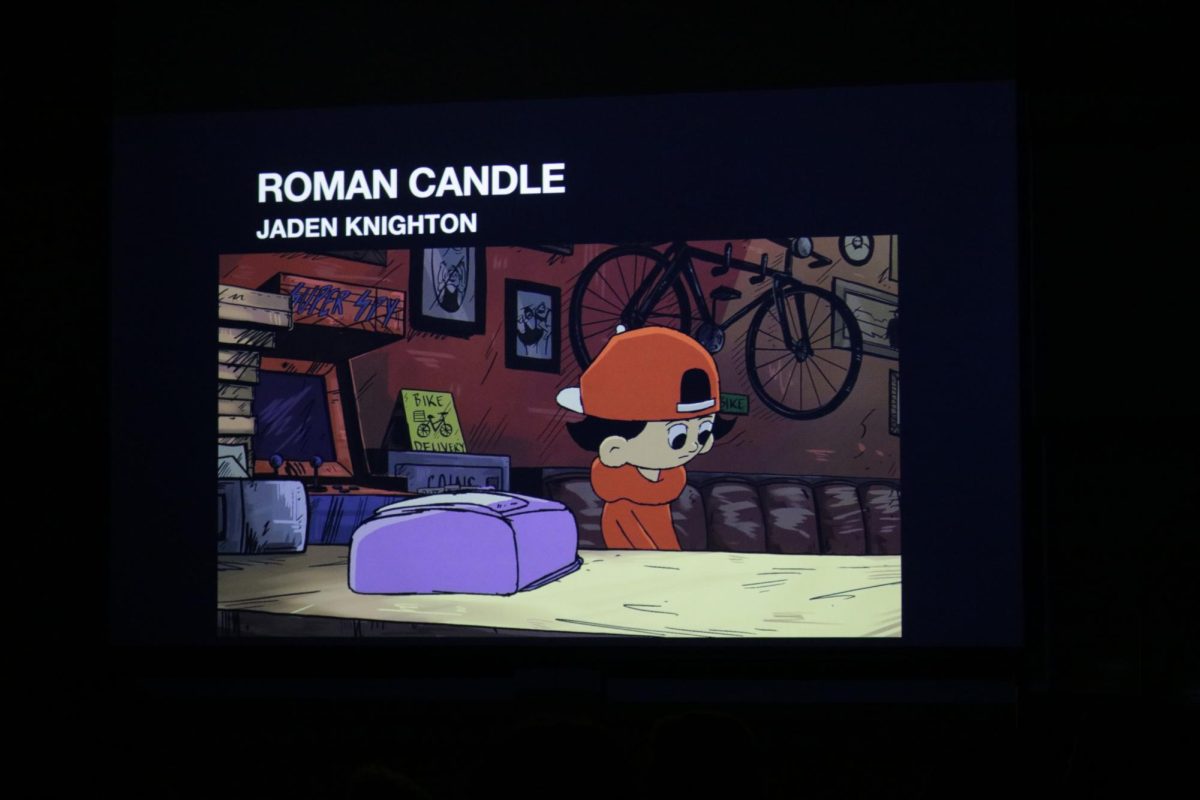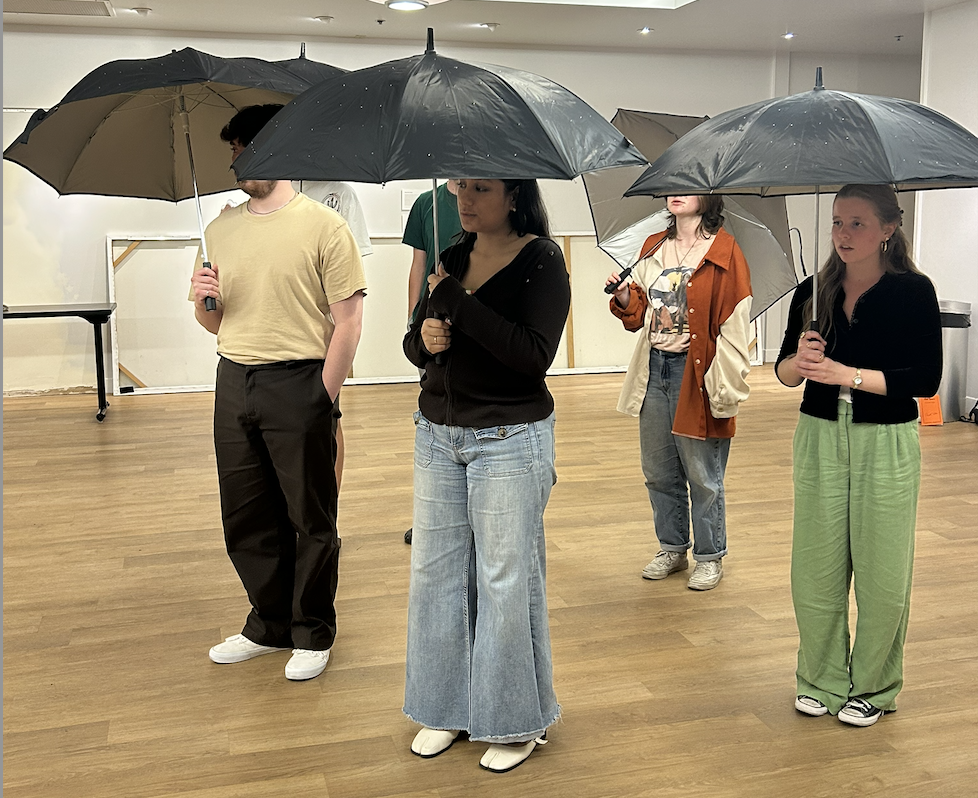This story was originally published in print on Nov. 15, 2018.
From the lighting of the stage to the ruffles of a character’s skirt to the songs played during a dance number, audiences hardly notice the nitty-gritty details of a theater production. Before the finished product of any production, many diligent backstage crew members spend months to prepare everything the audience sees on stage. Since the beginning of this semester, the backstage crew of Theatre 21’s “The Boys Next Door” have been testing lighting angles, stocking up on Wheaties cereal boxes and preparing all the things you would never have thought of in order to present their heartwarming play.
THE STAGE MANAGER SAVES THE DAY
For this production, senior theater major and stage manager Hye Won Kim is the wonder woman responsible for every on-stage moment of the play. From the openings and closings of doors to the entrances of actors, she stays behind the curtain to ensure the play runs smoothly. If you could relate theater to basketball, Kim is definitely the point guard of the show.
“You don’t know the hours and hours the stage manager has put into the show,” said Hannah Himes, prop master of the play and senior theater major.
For Kim, the most challenging part about working behind the scenes is communication. Because every backstage crew member’s role is essential, they must be on the same page at all times for the play to run smoothly. However difficult this is, the necessity for the backstage to be in sync strengthens crew members’ relationships with each other, which is Kim’s favorite part about working backstage. In addition to walking away with the feat of managing the stage of an entire show, Kim also walked away with a tight-knit family.
THE BACKSTAGE BUNCH
Likewise, costume design is another backstage role that audiences often overlook. Senior theater major Reagan Smalley has come to appreciate backstage work much more through her role as assistant costume designer for this production.
“I’ve kind of realized how important all of the backstage work is,” Smalley said. “I’m also really appreciative of the opportunity to work backstage versus on stage because I honestly feel like I’m learning so much more than I ever would have onstage as an actor.”
Smalley works with costume designer and senior theater major Brianna Ardon, who has been designing the characters’ costumes since the beginning of the semester, ensuring the costumes match their unique personalities. For example, one character always wears bright, cheery colors to match her jovial personality, while one character draws a “Blues Clues” type of look in his striped long-sleeve and blue jeans outfit to match his youthful personality.
Bringing their costume ideas to life involves being mindful about finances. Interestingly, the costume design team initially asks the actors if they have clothes that capture their character’s personality before they purchase clothing. Smalley shared that the costume design team seeks to accomplish tasks in the most affordable way possible. Through her time with backstage experience, she realized she has to be much more detail-oriented compared to being onstage.
“As an actor, everything is thrust upon you as the finished product, but as a behind the scenes person, you’re working every single detail until you get to see it,” Smalley said.
Prop design is another overlooked aspect of theater. The picture-perfect set audiences observe would not be possible without the prop team’s diligence and creativity. Himes has spent the last five weeks developing the props we see on stage. Her role as prop master consists of reading through the script and making note of the props that best fit the scenes. The prop team’s outstanding ability to utilize their creativity proves admirable in the play’s donut-filled scenes. In order to retain the glazed appearance of the donuts, the prop crew coated donuts in shellac, which audiences can look at throughout the play.
LIGHTS, CAMERA, ACTION
Bob Nydegger, the play’s lighting designer, seeks to transform the space into a setting that unifies the story through color and intensity. As a lighting designer, he must think 3-D, meaning he must constantly consider which angles prevent the actors from appearing flat. In order to provide the highest quality of lighting, Nydegger brings himself to the audience’s perspective. With the viewers in mind, he chooses the lighting he believes best represents each scene.
“I will never achieve perfection, but I always strive for excellence,” Nydegger said.
Director and assistant professor of theater Zachary Bortot describes the backstage and onstage work of theater productions as two worlds that simultaneously exist and eventually meet as showtime approaches. As the director, Bortot faces the challenge of orchestrating all the different visions of the on-stage and backstage crew members. However, through the months of preparing for this production, Bortot has beautifully meshed the crew’s ideas into one unifying vision that emphasizes a message of love and understanding.
“Theater is about understanding yourself and becoming empathetic towards the lives and concerns of others,” Bortot said.
Ticket prices for “The Boys Next Door” start at $8 and can be purchased here. Showtimes will run until Sunday, Nov. 18.








